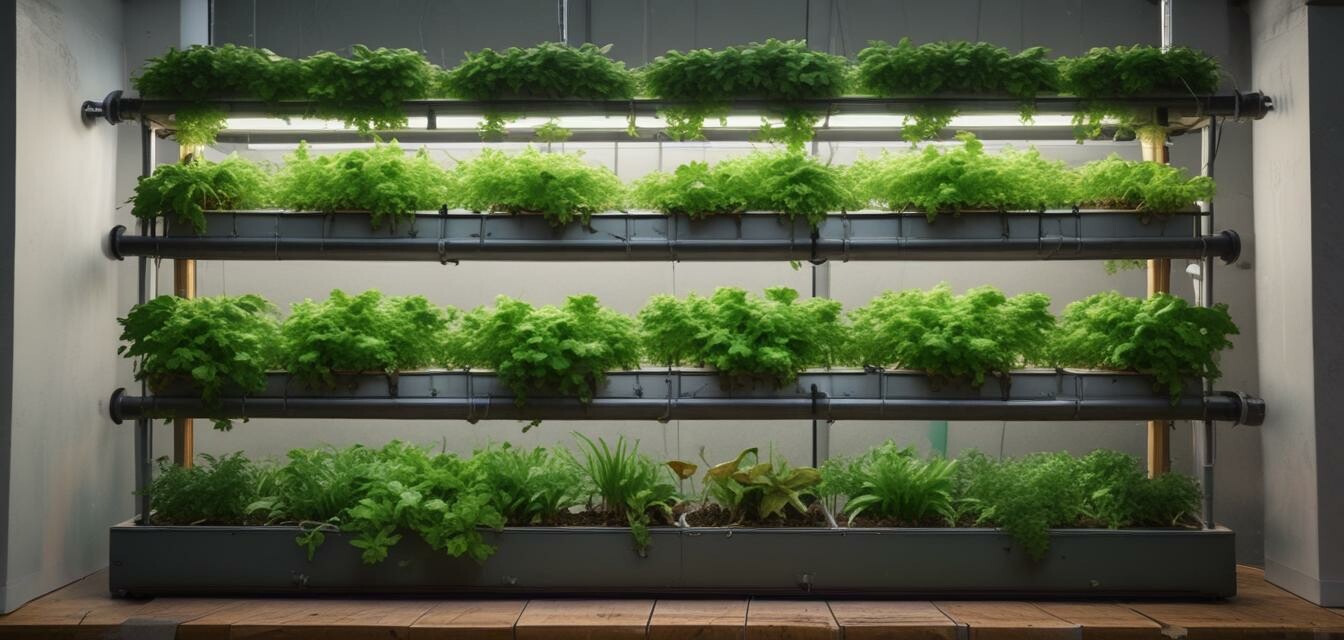
Upcycling for Hydroponic Gardening
Key Takeaways
- Upcycling materials for hydroponic gardening is sustainable and budget-friendly.
- A variety of common household items such as plastic bottles, PVC pipes, and old furniture can be repurposed.
- Upcycled systems can be tailored to fit small spaces, making them ideal for urban gardening.
- Implementing DIY projects fosters creativity while enhancing the hydroponic gardening experience.
- Learning about different hydroponic systems can aid in selecting the right setup for your needs.
Hydroponic gardening has surged in popularity as a modern, efficient way to grow plants without soil. With the added benefit of sustainability, upcycling materials into functional components for hydroponic systems allows gardeners to be both innovative and eco-conscious. By repurposing items around the home, you can create a diverse range of systems tailored to fit your space and needs.
What is Upcycling?
Upcycling is the process of transforming waste materials or unwanted products into new materials or products of better quality or higher value. In the context of hydroponic gardening, this means taking everyday items that would typically be discarded and turning them into functional components for growing plants. The process not only reduces waste but also saves money and encourages creativity.
Benefits of Upcycling for Hydroponic Gardening
- Cost-effective: Utilize items you already own instead of purchasing new supplies.
- Eco-friendly: Reduce waste by giving new life to discarded materials.
- Customizable: Tailor projects to fit your personal style and space requirements.
- Educational: Learn about hydroponics while developing problem-solving skills.
Popular Upcycling Ideas for Hydroponic Systems
There are numerous solutions for creating hydroponic systems with upcycled materials. Here are some creative ideas:
| Upcycled Item | How to Use | Benefits |
|---|---|---|
| Plastic Bottles | Cut in half to create simple vertical gardens or cut holes for seedlings to grow. | Lightweight, easy to find, and inexpensive. |
| PVC Pipes | Construct a nutrient film technique (NFT) system by connecting pipes to hold water and plants. | Durable, long-lasting, and excellent for larger systems. |
| Wooden Crates | Create a sturdy frame for a floating raft system or a greenhouse structure. | Provides natural aesthetic appeal and can be reinforced easily. |
| Old Furniture | Repurpose end tables or bookshelves into vertical gardens by placing planters on each shelf. | Enhances decor and uses items that might go to waste. |
| Glass Jars | Use as individual planters; perfect for herbs or small plants with direct water access. | Allows for visibility of roots and water levels. |
Tips for Successful Upcycling
Tips for Getting Started
- Collect unwanted items: Before purchasing anything new, see what you can repurpose.
- Research: Look for inspiration from online communities, books, or other hydroponic gardening resources.
- Be creative: Don’t hesitate to think outside the box. Almost anything can be turned into a functional gardening component.
- Stay safe: When cutting or altering materials, wear gloves and safety glasses to protect yourself.
- Test your designs: Experiment with different setups to find what works best for your plants.
Types of Hydroponic Systems You Can Create
Upcycled components can easily be integrated into various hydroponic systems. Here are a few types you might consider:
- Nutrient Film Technique (NFT): A shallow stream of nutrient solution constantly recirculates past the plant roots.
- Deep Water Culture (DWC): Plants grow with their roots submerged in a nutrient-rich solution.
- Wicking System: A simple method where a wick draws nutrient solution to the plants from a reservoir.
- Vertical Garden: Maximizes space by growing plants upwards using shelves or hanging systems.
Conclusion
Upcycling for hydroponic gardening fosters creativity while making gardening more sustainable and economical. By transforming everyday items into functional components, not only can you achieve an efficient and personalized growing system, but you can also contribute to environmental sustainability. With an abundance of resources available, including our DIY Projects category, there’s no limit to what you can create!
Pros
- Affordable and cost-effective gardening solutions.
- Encourages creativity and resourcefulness.
- Provides educational opportunities for understanding hydroponics.
- Helps in reducing waste and promoting sustainability.
Cons
- May require additional modifications for optimal performance.
- Some items may not be suitable for prolonged exposure to moisture.
- Needs careful planning to ensure structural integrity.
Explore our range of hydroponic products to further enhance your sustainability projects. Check out Hydroponic Systems for comprehensive options that complement your upcycled projects!

